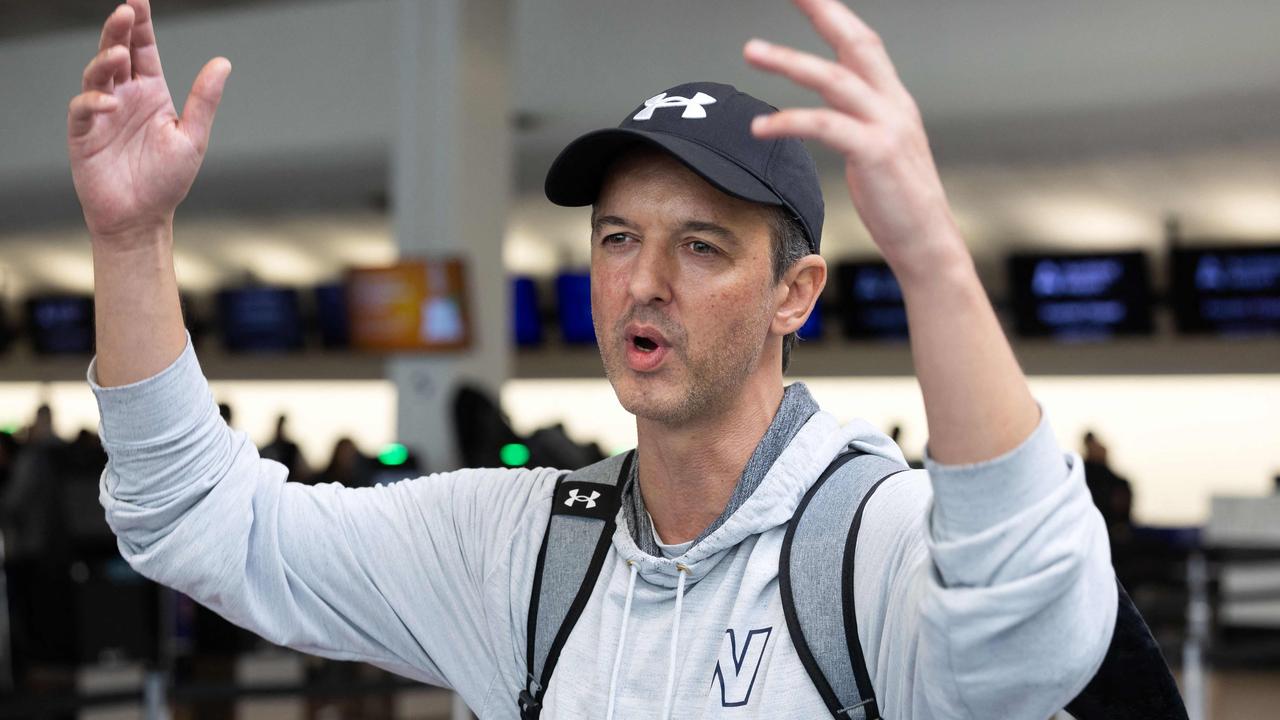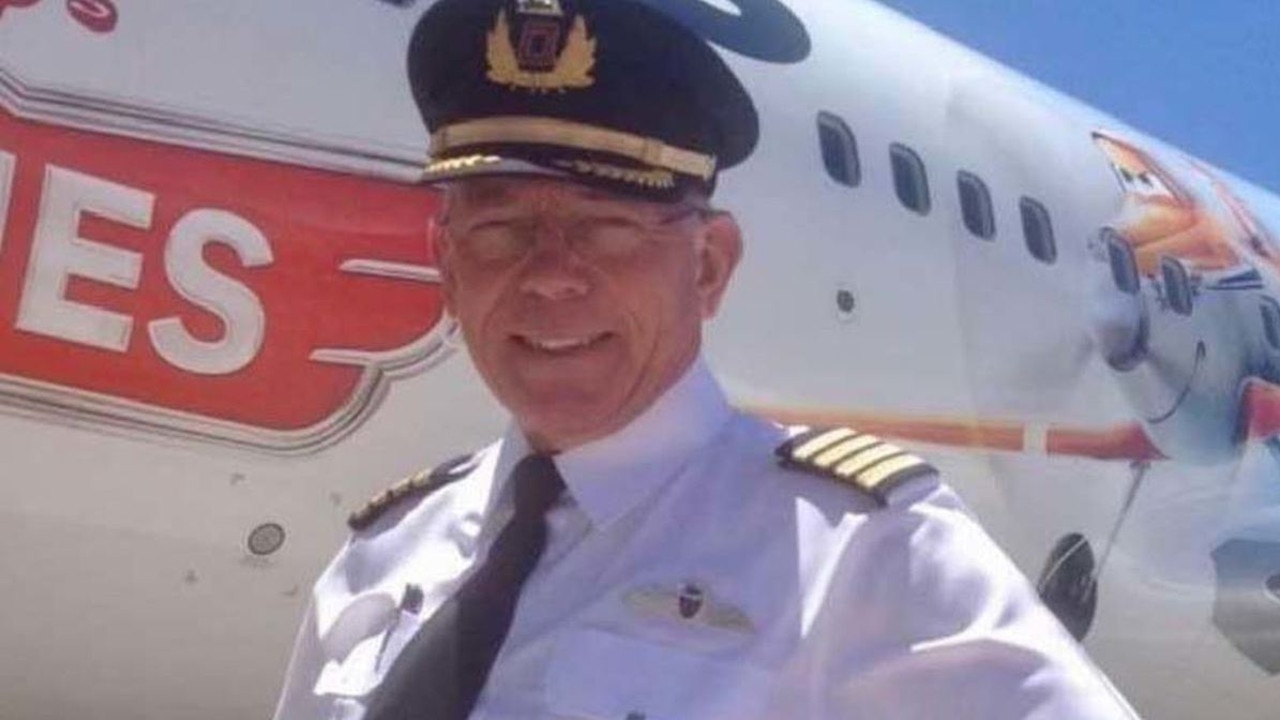‘Pilot seat movement’ probed in LATAM Sydney to Auckland flight plunge that injured 50
Investigators have zeroed in on a possible cause of the sudden plunge on board a LATAM flight from Sydney to Auckland that sent passengers crashing into the ceiling.
“Pilot seat movement” is being probed as the possible cause of the sudden plunge on board a Latam flight from Sydney to Auckland on Monday that injured 50 people, according to a report.
Latam Airlines flight LA800, a one-stop service from Sydney to Santiago, Chile, plunged suddenly about two hours into the three-hour leg to New Zealand while over the Tasman Sea on Monday afternoon, sending unrestrained passengers crashing into the ceiling.
Passenger Brian Jokat, 61, a Canadian who lives in London, said in several interviews with media outlets that after the plane landed the pilot claimed his “gauges just blanked out” and he “lost all ability to fly the plane”.
“I asked him, ‘What happened?’ and he said to me, ‘I lost my instrumentation briefly and then it just came back all of a sudden,’” Mr Jokat said on public broadcaster RNZ. “I know he felt really bad for everyone.”
But aviation industry website The Air Current reports that the focus of the probe has now centred on the movement of a flight deck seat, according to two unnamed people briefed on the incident — and that what caused the seat to move is a key question for investigators.
One of the people said early information was that the seat movement was “pilot induced, not intentionally”, while the other said “the seat movement caused the nose down” but added the possibility of an electrical short was also under review.
The sources said reported claims that gauges “blanked out” were not the main focus of any inquiry.

According to The Air Current, all Boeing commercial planes have a large yoke or control wheel in front of the left and right pilot seats that sits between the legs of the flight crew while their feet are on the pedals.
Each seat can be moved in two different ways — a switch on the side of the seat to move it along a track while the pilot is seated, and a set of covered switches on the back of the seat below the headrest, typically used to move the seat back so the pilot can gain access.
The Air Current reports Boeing was expected to issue a Multi-Operator Message (MOM) to 787 operators about the incident, although the details were not yet known.
The outlet noted that there was historical precedent for seat movement being involved in unintentional flight upsets.
In 2014, a UK Royal Air Force-operated Airbus A330-220 was carrying 198 occupants, almost all unrestrained, to Afghanistan when it “suddenly and very violent pitched down very rapidly losing over 4000 feet of altitude”, causing a “considerable number of minor injuries”.
Investigators found the captain had placed his personal camera directly behind his sidestick, in the space between stick and the left arm rest of his seat, according to SKYbrary Aviation Safety.
“One minute and 44 seconds prior to the beginning of the upset, it was found that his seat had been moved forwards ‘creating a slight physical jam between the front of the arm rest and the rear base of the sidestick’ which the captain had been unaware of,” the website said.
“Then, concurrently with the onset of the event, the captain’s seat was moved forward again, this time forcing the camera against the side stick and moving it quickly to a jammed fully-forward position.”

The Latam Boeing 787-9 Dreamliner was carrying was carrying 263 passengers and nine flight and cabin crew members when it experienced a “strong shake” during Monday’s flight, a spokesman for the Chilean airline said.
Emergency services rushed to Auckland Airport around 4pm where 50 people were treated at the scene by St John Ambulance and 10 were transported to hospital, including four Australians.
The incident is now being investigated by New Zealand’s Transport Accident Investigation Commission (TAIC) and Chile’s General Directorate of Civil Aeronautics (DGAC).
The TAIC said in a statement on Tuesday that under international conventions, the DGAC was responsible for investigating the incident but “has requested the assistance” of its New Zealand counterpart.
“TAIC is in the process of gathering evidence relevant to the inquiry, including seizing the cockpit voice and flight data recorders,” the agency said on Tuesday.
Passengers destined for Santiago were rebooked and left New Zealand on Tuesday evening.
“Latam provided affected passengers with food, accommodation and transportation due to the flight cancellation,” an airline spokesman said.
“Latam Airlines Groups’ priority is to support the passengers and crew members of the flight, and apologise for any inconvenience and discomfort that this situation may have caused. They also reiterate their commitment to safety as an uncompromising value within its operational standards.”

Boeing said it “stands ready to support the investigation-related activities as requested”.
The US manufacturer has been hit with a series of safety issues in recent years, and is still reeling from a near-catastrophic incident on January 5 when a Boeing 737 MAX 9 operated by Alaska Airlines was forced to make an emergency landing after a panel on the jet’s fuselage blew out.
US regulators earlier this month gave Boeing 90 days to come up with a plan addressing quality control issues, with the Federal Aviation Administration (FAA) chief saying the company must “commit to real and profound improvements”.
FAA inspectors found that Boeing failed 33 out of 89 product audits — a review of specific aspects in the production line — with a total of 97 counts of alleged noncompliance. Spirit AeroSystems, which makes the body of the 737 Max jets, failed seven out of 13 product audits. One of its noted failures had to do with the installation of the aircraft’s door plug.
This week, the National Transportation Safety Board (NTSB) said Boeing had been unable to produce key information about work performed on the Alaska Airlines plane before the incident.
“The absence of those records will complicate the NTSB’s investigation moving forward,” NTSB chair Jennifer Homendy said on Wednesday.

In a letter addressed to leaders of the Senate Commerce, Science and Transportation Committee, Ms Homendy said the door plug that failed had been opened so rivet repair work could be done in September last year.
The work took place at Boeing’s Renton, Washington facility before delivery to Alaska Airlines.
“To date, we still do not know who performed the work to open, reinstall, and close the door plug on the accident aircraft,” Ms Homendy said.
Boeing told the NTSB it could not find records documenting the work, she added. Although investigators requested security camera footage, they were informed the footage had been overwritten, the letter said.
In response to queries, Boeing said it has been “transparent and proactive” in supporting regulatory inquiries on the incident. The company added that video recordings are maintained on a rolling 30-day basis.
Amid the wave of negative headlines, a former Boeing worker who previously raised safety concerns about its planes was found dead from a “self-inflicted wound” on the day he was due to testify against the company.
Lawyers representing John Barnett, 62, questioned whether the former quality manager actually took his own life in a South Carolina carpark over the weekend and called for an investigation.
“We didn’t see any indication he would take his own life,” they added. “No one can believe it.”
— with AFP






